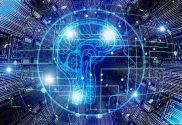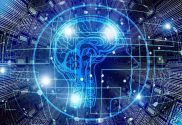
Deepfake AI-generated images that went viral in 2023
In recent years, deepfake technology has developed quickly, making it harder to distinguish between fact and fiction. It’s getting harder to tell which of these artificial intelligence (AI)-generated videos is real and which isn’t. This essay will examine the idea of deepfakes, their development, and the moral dilemmas associated with its application.
What is a Deepfake?
Fundamentally, a deepfake is a video in which the likeness of one person is substituted for another using artificial intelligence technology. The word “deepfake” came about via combining the terms “deep learning” and “fake.” Deepfakes initially had a very “uncanny valley” vibe, which indicated that the content wasn’t real. But increasingly convincing deepfake examples are being produced as AI and deepfake techniques progress. These days, it’s getting harder to spot the defects in these creations.
The Progression of Deepfake Technology
Deepfakes have advanced significantly since they first appeared. Hollywood used intricate and costly pipelines in the past to superimpose actors’ features, either real or imaginary. However, deepfake technology has become more widely available because of user-friendly software tools like FakeApp and DeepFaceLab. The application of generative adversarial networks (GANs), in which two AI algorithms battle with one another, led to the breakthrough in deepfaking. Fake content is created by one algorithm, and its attempts are upgraded by another. The synthesis engine gains knowledge to produce more lifelike deepfakes as a result of this process.
Deepfakes’ believable visual changes have enthralled audiences. In addition to astounding and amusing us, these top instances of deepfakes also raise questions regarding the integrity of digital material.
1. Nicki Minaj and Tom Holland
A scene from ITVX’s Deep Fake Neighbor Wars is among the strangest deepfake examples. In one video, Tom Holland, an actor, and artist Nicki Minaj play a distressed couple telling the story of Mark Zuckerberg breaking into their home.
2. Morgan Freeman Deepfake
In a video posted on the Dutch deepfake YouTube channel Diep Nep, the late actor Morgan Freeman is portrayed in a startlingly realistic deepfake. When the footage reappeared on social media, debates concerning the integrity of the material erupted.
3. The Israeli Woman and the Soldier
A young Israeli woman is shown in one of the most stunning AI deep fakes, suffering from wounds and desperately clutching to a soldier’s arms. This striking picture may pass for a classic piece of photography, perfectly capturing the feelings of a war-torn area. But it’s completely artificial intelligence (AI) produced, not based on any actual incident.

4. Jim Carrey in “The Shining”
Deepfake creators have merged actor Jim Carrey with the cult classic horror movie “The Shining” in an odd crossover. Carrey’s exaggerated expressions are highlighted in these deepfakes, further solidifying his casting as Jack Torrence.
5. The Ukrainian Girl
Another AI deepfake that has attracted notice features a picture of a girl and youngster from Ukraine holding hands among the wreckage of a destroyed city. This moving image evokes resilience and hopelessness. But, just like the last deepfake, this one is entirely made up and doesn’t represent an actual incident.
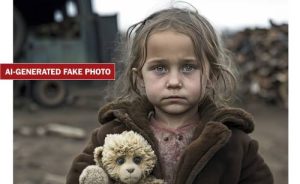
6. Tobey Maguire in “Spider-Man: No Way Home”
The original Spider-Man actor Tobey Maguire stole the trailer for “Spider-Man: No Way Home” and replaced Tom Holland’s visage with his own, according to Deepfake inventor Shamook.
7. Donald Trump’s Fake Arrest
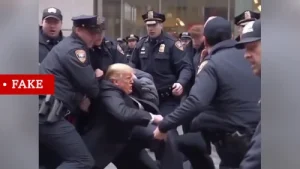
8. Jerry Seinfeld in “Pulp Fiction”
Here’s a funny deepfake from deepfake maker DesiFakes that puts Jerry Seinfeld in one of the most well-known moments from “Pulp Fiction.” Remarkable audio synchronization and editing capture the spirit of a Seinfeld episode.
9. Flames rising from Hawaii
A picture of a fire emerging from the tropical ocean waters in the middle of Maui’s wildfires surfaced in an incredible demonstration of artificial intelligence-generated photography. This deep fake’s realism shows off AI technology’s amazing ability to produce visually attractive and engrossing material.
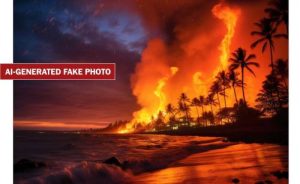
10. Tom Cruise on TikTok
The progress of deepfake technology is so great that celebrity deepfakes are their own TikTok account. A prominent account showcases deepfakes of Tom Cruise that mimic his voice and mannerisms.
@deeptomcruise Not gonna lie… I love nerds 👨🎓@harvard
11. The Gaza Explosion
One of the most contentious AI deep fakes used an image of an explosion in Gaza. Despite being identified as artificial intelligence (AI)-generated, this stock photo from a website was published on other websites without any notice that it wasn’t real. The stock photo website strengthened its policies in response to the incident to stop misleading content from spreading.

12. Pope Francis Puffer Jacket Deepfake
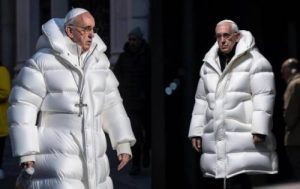
13. Luke Skywalker in “The Mandalorian”
When Luke Skywalker appeared in “The Mandalorian” season two finale, fans of the Star Wars franchise were ecstatic. However, some viewers pointed out errors in the computer-generated portrayal of a youthful Mark Hamill. Later, it came to light that YouTuber Shamook had produced a deepfake of Luke Skywalker from the Return of the Jedi.
14. Harry Potter in Balenciaga
15. AI-Generated Image of the Isreal-Gaza Conflict
AI-generated photos of war zones, including the wars in Ukraine and Israel-Gaza, are more and more common on stock photo websites. Even though they are marked as artificial intelligence (AI) photos, some manage to evade identification, making it difficult to distinguish between authentic and fraudulent information.
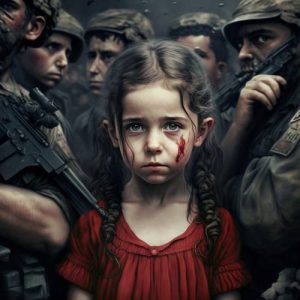
16. Deepfake News Anchor in Korea
The use of deepfake technology has even reached mainstream media. A deepfake of MBN, a Korean television network featuring Kim Joo-Ha as its news anchor, was shown to viewers.
17. Wonder Woman Deepfake with Gal Gadot
Moreover, deepfakes have been utilized to reinvent iconic TV and movie characters. Actress Lynda Carter from the 1970s “Wonder Woman” TV series is a deepfake example, appearing in sequences with Gal Gadot’s contemporary character portrayal.
18. AI-Generated Images of the Black Lives Matter Protests
Images of protests, particularly those connected to the Black Lives Matter movement, have also been produced using AI. Despite their striking visuals, these photos are entirely artificial intelligence (AI) produced and do not depict real protests. The difficulty of authenticating visual content is highlighted by the prevalence of these deepfakes on social media and stock photo websites.
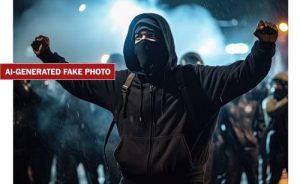
19. Pentagon Explosion Deepfake
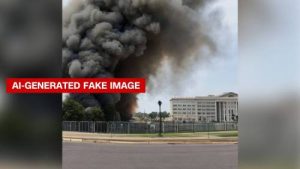
Deepfakes are a Threat to Journalism Ethics
As AI-generated images continue to increase, there is a growing concern about their impact on journalism ethics. With the decline in visual staff at media organizations, relying on AI-generated images as a cost-effective alternative is tempting. However, using deep fakes in place of authentic photographs taken by journalists on the ground undermines the integrity of journalism and can create false narratives.
The Growth of AI-Generated Images in 2023
Artificially generated photographs produced with AI algorithms are becoming more common on stock photo websites. One of the biggest stock photo businesses, Adobe Stock, came under fire when an AI-generated photo of an explosion in Gaza went viral, and no one seemed to be able to verify its authenticity.
When one searches Adobe Stock for current event-related keywords like “Gaza” or “Ukraine war,” many artificial intelligence-generated photos come up. For example, when searching for “Gaza,” more than 3,000 photos classified as artificial intelligence (AI) photographs surfaced. A similar pattern is seen regarding other subjects, such as Black Lives Matter demonstrations and natural disasters.
Conclusion
The proliferation of AI-generated photos on stock image sites makes it more difficult to distinguish between real and fake. Concerns concerning the integrity of news reporting, the dissemination of false information, and public confidence in visual content are brought up by the possible misuse of these photographs. Tighter regulations, industry cooperation, and technological developments are required to solve these issues and guarantee the legitimacy of images in the digital environment.
The industry can significantly save visual content’s accuracy and dependability by using watermarking technologies, enforcing labeling standards, and encouraging transparency. Working together can only lessen the hazards of blending reality and fiction in artificial intelligence-generated visuals.
Featured Image Credit: Photo by Andrea Piacquadio; Pexels


